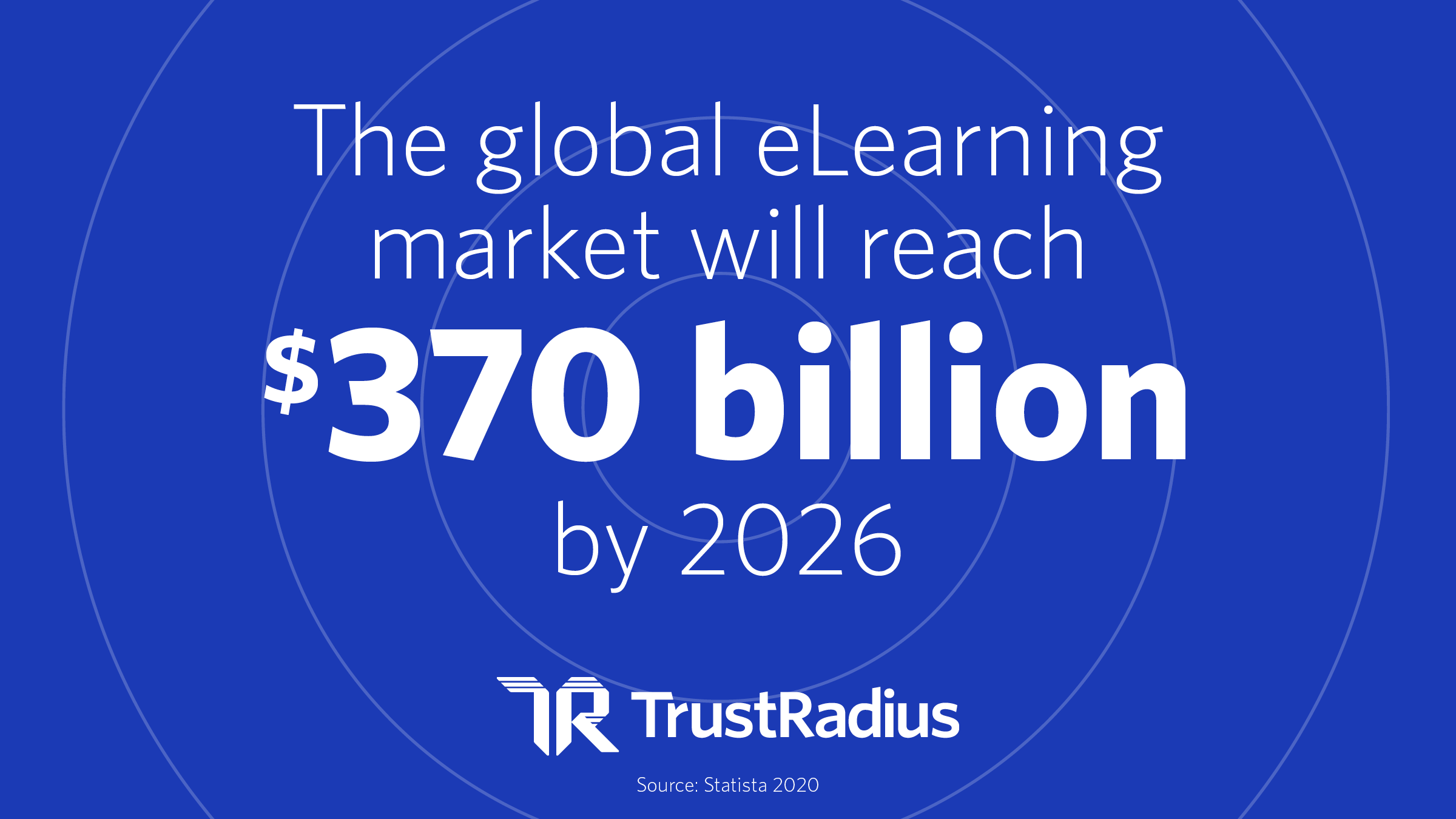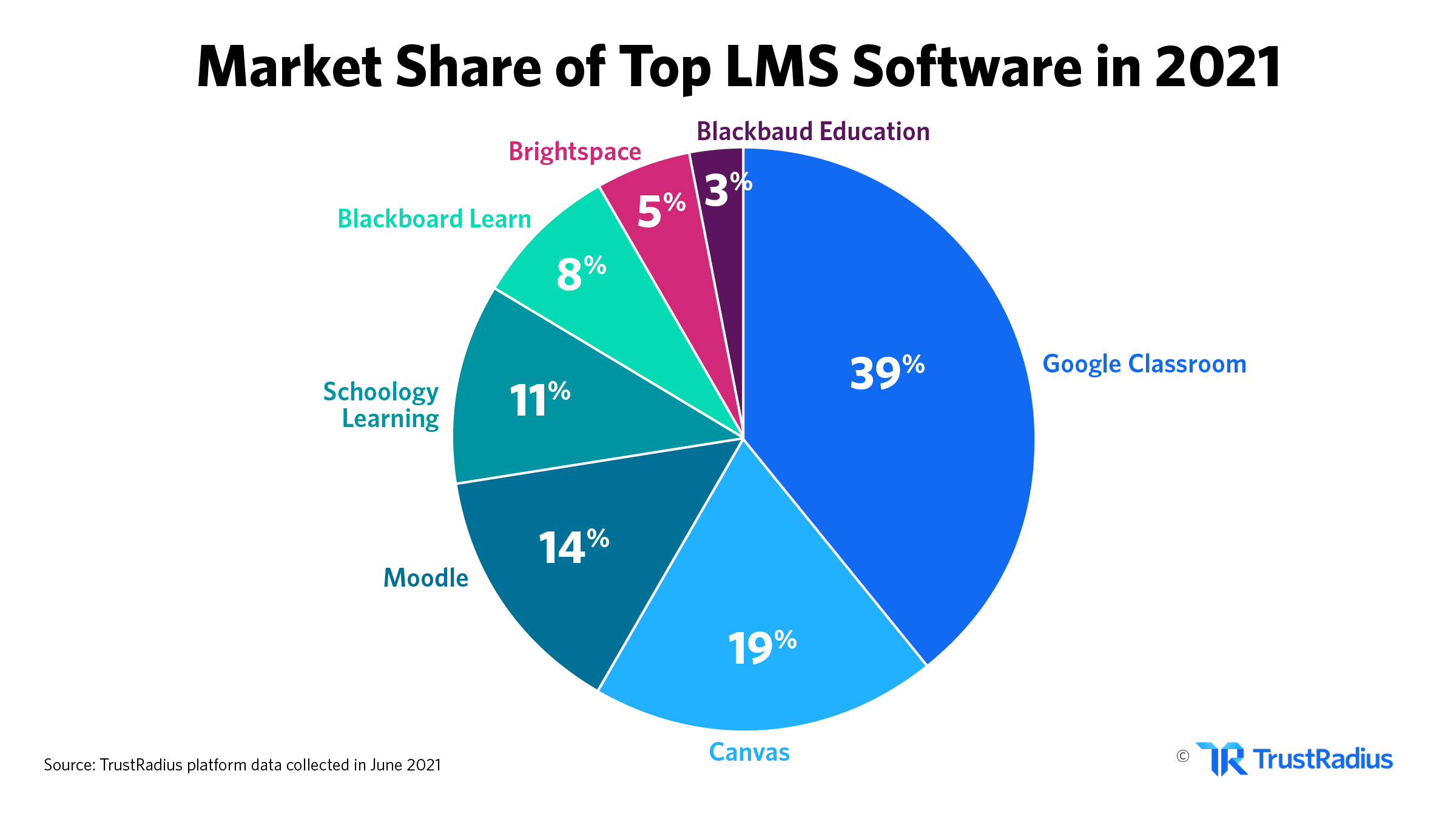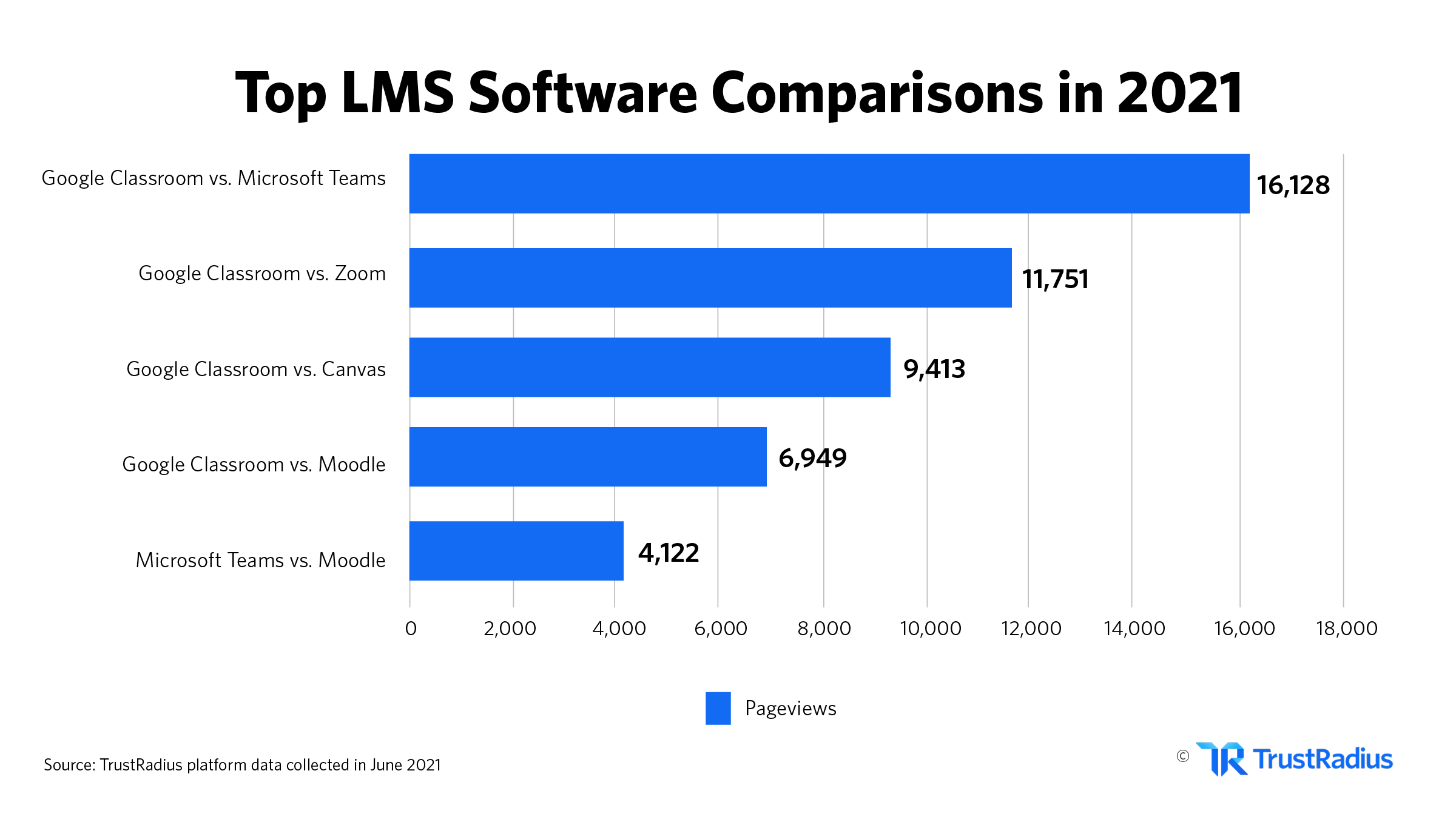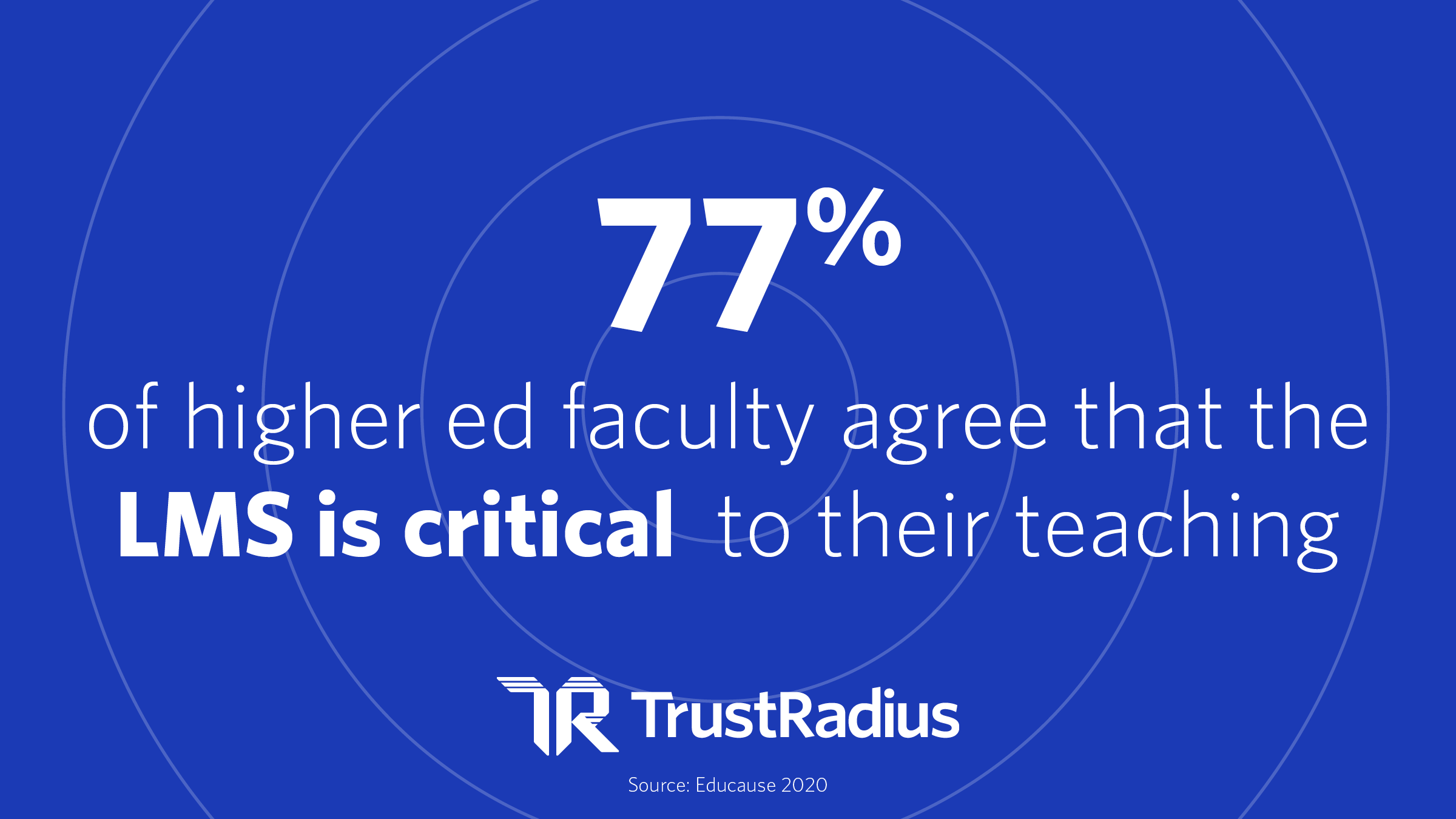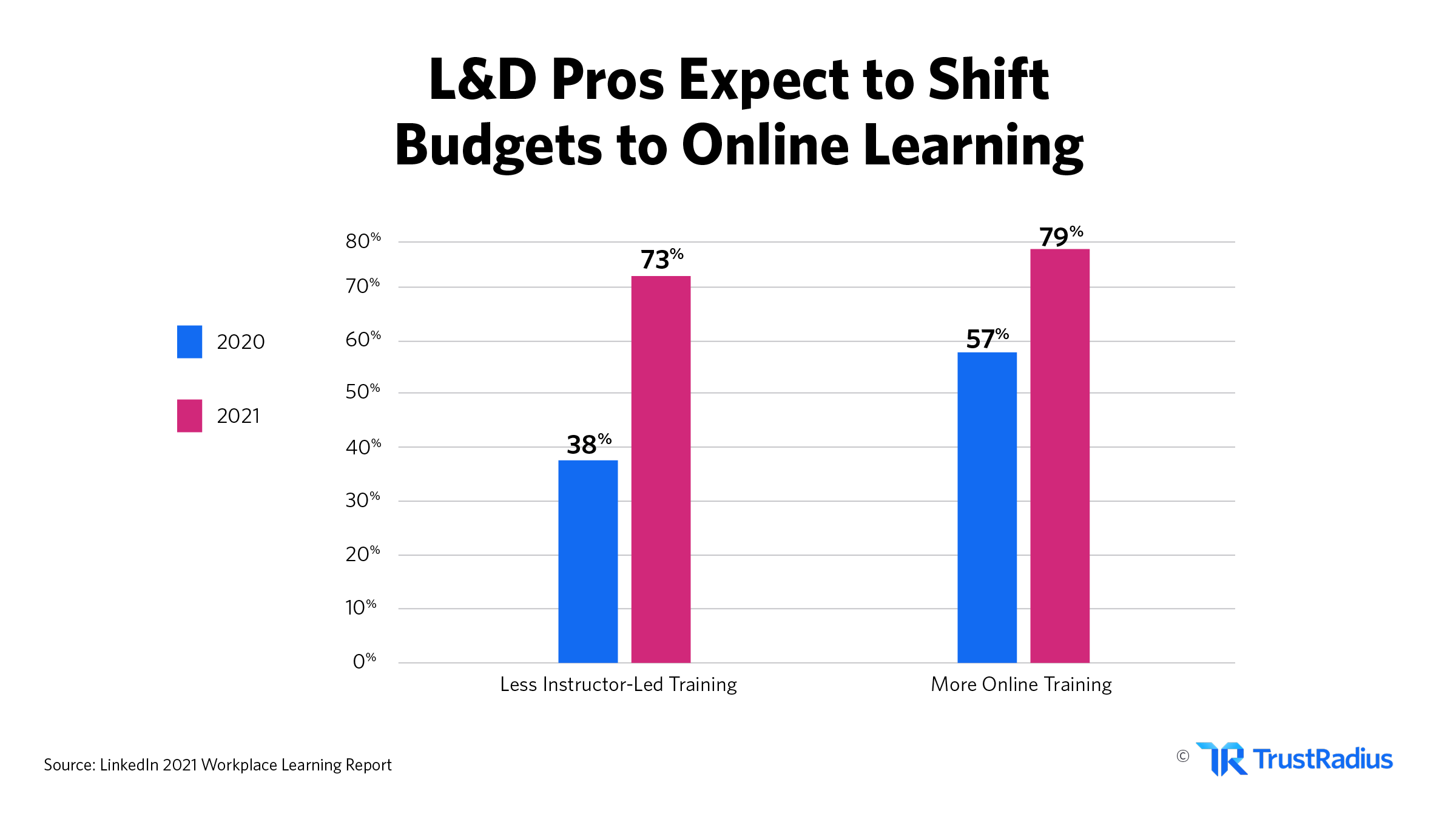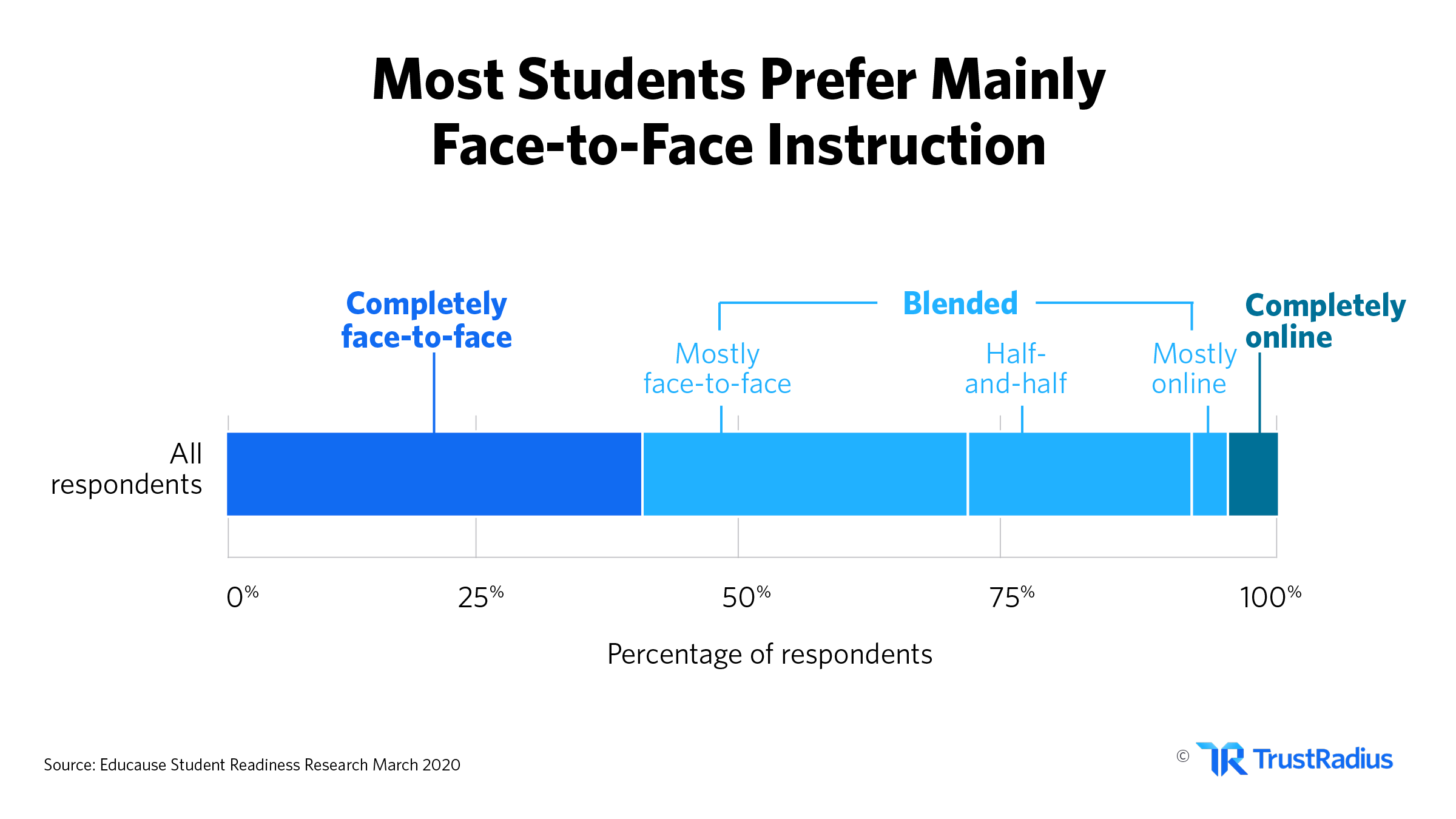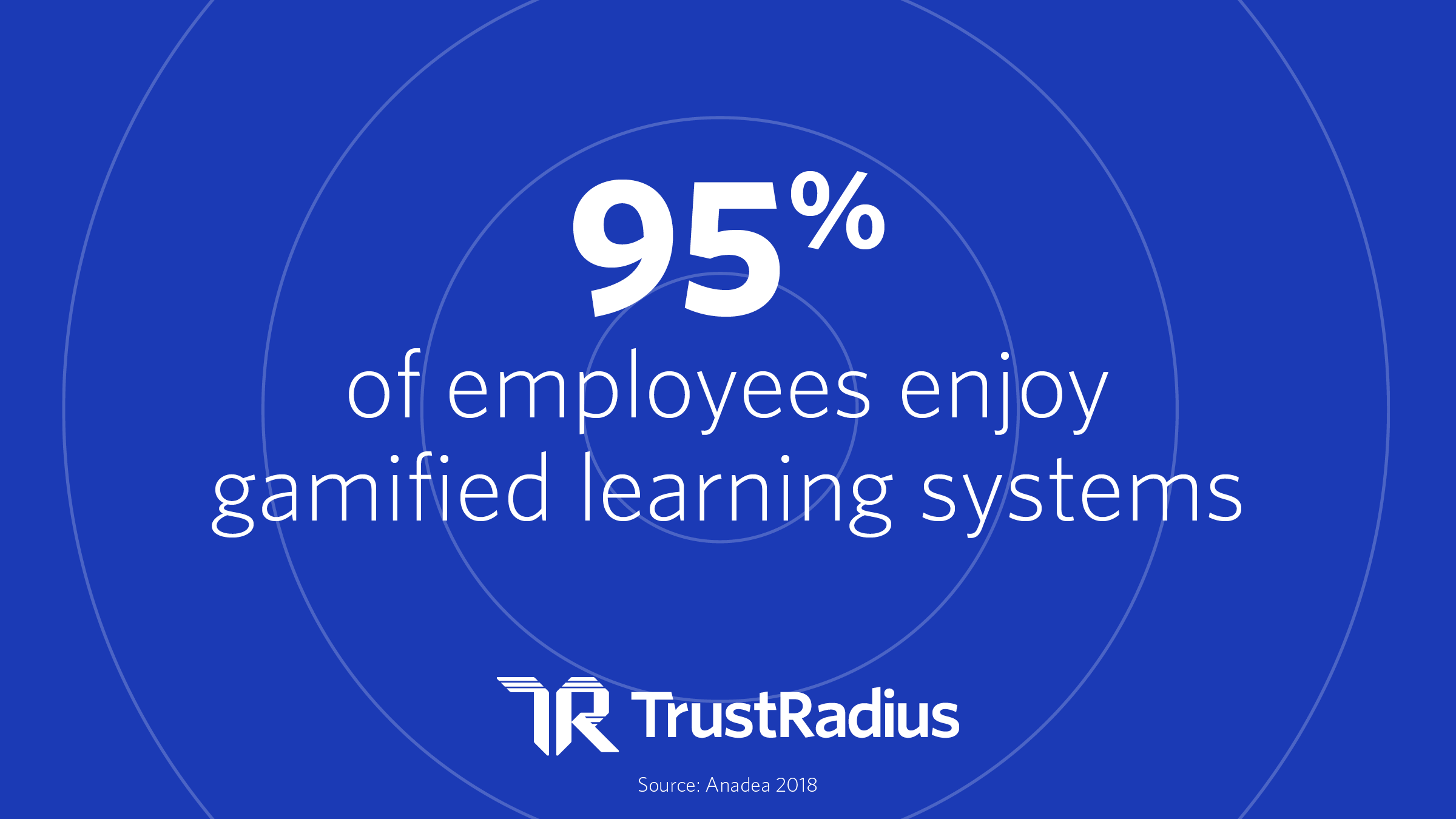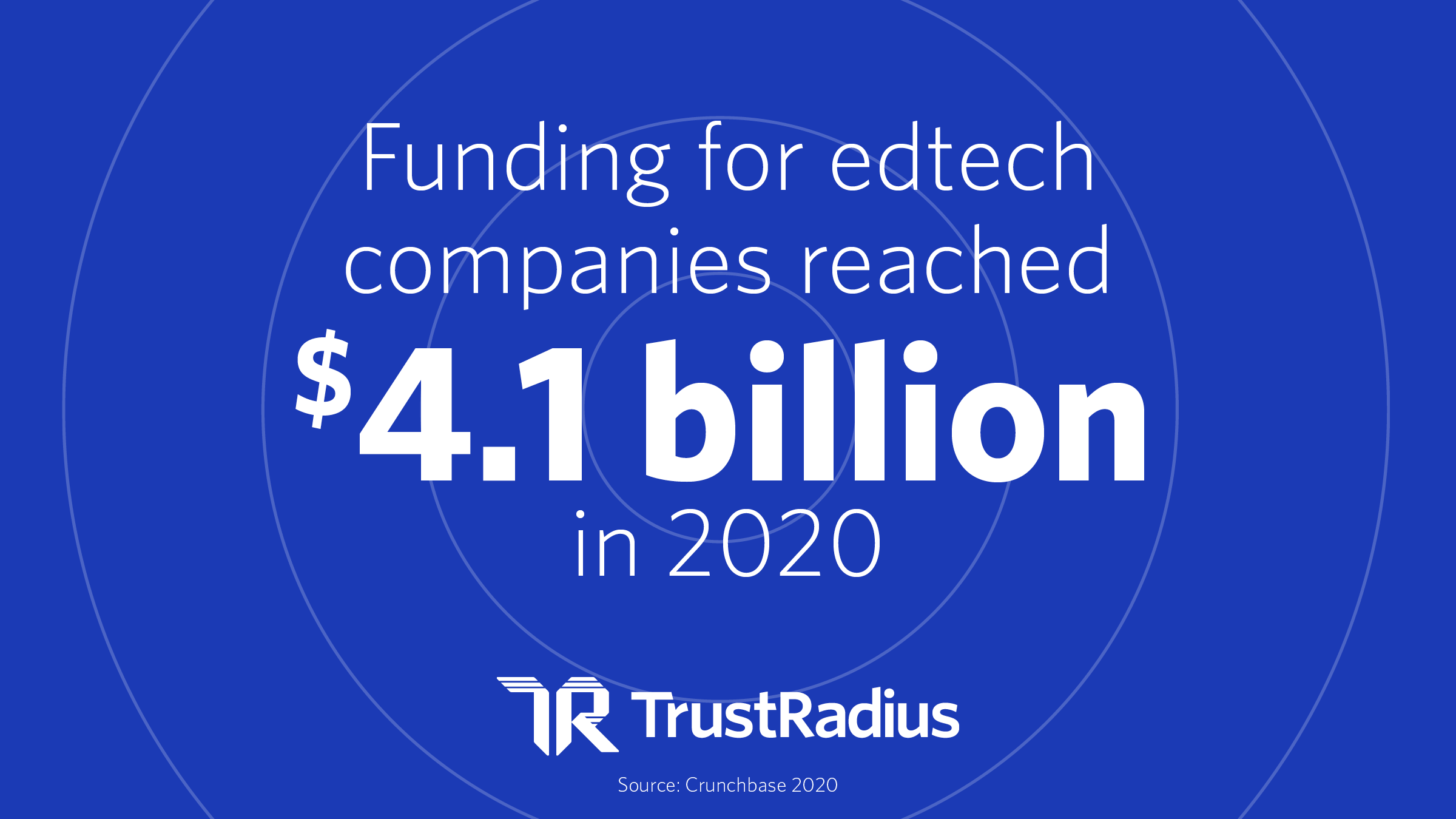49 LMS Statistics and Trends for a Post-COVID World
Out of all the software markets that boomed after COVID-19, LMS might be the biggest.
98% of higher education institutions moved online as of April 2020. Most companies went remote. And all those orgs suddenly created an urgent need for LMS software.
The LMS market exploded in 2020 and will continue growing well past 2021. These statistics show how important learning management systems are in a post-COVID world.
Click on a Section to Explore:
10 LMS Statistics You Need to Know in 2021
- By 2026, the global eLearning market is forecasted to reach over $370 billion (Statista 2020)
- 98% of educational institutions moved the majority of their classes to online courses as of April 2020. (Education Data 2021)
- 77% of learners feel that their LMS has had a positive impact on satisfaction, productivity, and teaching during COVID-19. (Capterra 2020)
- 64% of global L&D pros agree that learning & development shifted from a “nice to have” to a “need to have” in 2021. (LinkedIn 2021)
- 23% of companies have been using the same LMS for over five years. (Docebo 2019)
- 39% of users consider functionality as the most significant priority when selecting a new LMS. (Capterra 2020)
- 99% of institutions provide LMS and educational technology support for students, but a majority of students have either not received any LMS training or don’t know if they have received training. (EDUcause 2020)
- 33% of global L&D pros surveyed in March 2021 expect their budgets to increase. Only 19% expect their budgets to decrease. (LinkedIn 2021)
- Google Classroom commands 39% of the LMS market in 2021 when compared to other leading LMS software. (TrustRadius 2021)
LMS Market Size and Spending Statistics
- In 2019, the global eLearning market reached $101 billion. By 2026, the total market is forecasted to grow exponentially, reaching over $370 billion. (Statista 2020)
- JPMorgan Chase plans to spend $600M to upskill their workforce. Amazon is investing over $700M to provide upskilling training to their employees. And, PwC is spending $3B to upskill all of its 275,000 employees over the next three to four years. (LinkedIn 2021)
- 33% of L&D pros globally surveyed in March 2021 expect their budgets to increase. Only 19% expect their budgets to decrease. (LinkedIn 2021)
- By the end of 2020, researchers and marketers believe that the corporate eLearning market will reach $31 billion in revenue. (Technavio 2020)
- The education industry is expected to spend $3.1 billion on enterprise video by 2022. (Ovum 2019)
- 73% of L&D pros expect to spend less on ILT (instructor-led training) and 79% expect to spend more on online learning. (LinkedIn 2021)
- 43% of educational institutions have invested in new online learning resources and tools as of April 2020. (Education Data 2021)
Who’s Winning LMS Market Share in 2021?
Over 1.2 million software buyers use TrustRadius each month. Many of them are shopping for LMS software—so we took a closer look at our data to see which products attract the most attention.
According to buyer interest, the top 8 leaders in today’s LMS market are:
Out of those companies, we’re seeing clear winners when it comes to market share:
- Google Classroom commands 39% of the LMS market in 2021 when compared to other leading LMS software. (TrustRadius 2021)
- Moodle is the most popular open-source LMS in the higher education market. Canvas is the most popular paid option. (TrustRadius 2021)
If you’re looking for a corporate LMS solution, the big players are:
- Google Classroom is the most-compared LMS software in 2021. (TrustRadius 2021)
- LMS buyers spend most of their time comparing Google Classroom to Microsoft Teams, Zoom, Canvas, and Moodle. (TrustRadius 2021)
The Impact of COVID-19 on eLearning
- 98% of educational institutions moved the majority of their classes to online courses as of April 2020. (Education Data 2021)
- 74% of learners feel that their LMS has had a positive impact on satisfaction, productivity, and teaching during COVID-19. (Capterra 2020)
- 44% of students during the pandemic experienced internet connectivity issues that were serious enough to interfere with their ability to attend or participate in their course. 16% percent of students experienced such problems often or very often. (Digital Promise 2021)
- 23% of students during the pandemic experienced hardware or software problems serious enough to impact their ability to attend or participate in their course. (Digital Promise 2021)
- 79% of students used a laptop computer to access their online course after COVID-19. A desktop computer was used by 15%, a tablet by 3%, and a smartphone by 2%. 10% of students had to share the device they were using to access the course with other users. (Digital Promise 2021)
- 79% of students during the pandemic say it was difficult to stay motivated to do well in their course after it went online. (Digital Promise 2021)
LMS Usage Statistics
- 77% of higher education faculty agree or strongly agree that the LMS is critical to their teaching. 73% believe the LMS is a critical tool to enhance student learning. (EDUcause 2020)
- 68.3% of higher education students used the LMS for all of their courses. (EDUcause 2020)
- Although 99% of institutions provide LMS and educational technology support for students, a majority of students have either not received any LMS training or don’t know if they have received training. (EDUcause 2020)
- 89% of higher education faculty already used some of the features of the LMS before the COVID-19 pandemic (mainly for administrative tasks such as posting a syllabus, pushing out information, pushing out and collecting assignments, and tracking grades). (EDUcause 2020)
- Before the pandemic, 38% of higher education faculty across institution types used the LMS to teach completely online courses. That number was highest among AA institution faculty (52.3%) and lowest among BA faculty (25.4%). (EDUcause 2020)
- 35.9% of students at associate-level institutions have received formal LMS training—which is more than students at other types of institutions. (EDUcause 2020)
- 23% of companies have been using the same LMS for over five years. (Docebo 2019)
- 39% of users consider functionality as the most significant priority when selecting a new LMS. The other considerations focused on reliability (20%), training support (17%) as well as price (12%). (Capterra 2020)
- Poor usability (53%) and high cost (44%) were seen as the biggest factors that cause learning leaders to seek out a new and improved learning management system. (Capterra 2020)
Corporate eLearning Statistics
- From 2019 to 2020, the number of enterprise learners more than doubled, and the amount of learning has also increased by 58% more hours per learner. (LinkedIn 2021)
- 76% of Gen Z learners believe learning is the key to a successful career. (LinkedIn 2021)
- 64% of L&D pros globally agree that L&D shifted from a “nice to have” to a “need to have” in 2021. (LinkedIn 2021)
- 66% of United States L&D pros agree that CEOs are active champions of learning. This is up from 27% in March 2020. (LinkedIn 2021)
- 59% of learning & development professionals say that upskilling and reskilling programs are their top priority in 2021. Other top priorities include leadership and management (53%) and virtual onboarding (33%). (LinkedIn 2021)
- 66% of global L&D pros agree that they are focused on rebuilding and reshaping their organizations this year. (LinkedIn 2021)
- 49% of L&D pros are working with managers to drive learner engagement and skill building (LinkedIn 2021)
- 39% of global L&D pros say that they are responsible for helping leaders identify current and future skills gaps, developing tools to help build internal mobility programs (33%), and helping to identify skills adjacencies (31%). (LinkedIn 2021)
Online Learning Statistics 2021
- Gen Z learners watched 50% more hours per learner of learning content in 2020 vs. 2019. (LinkedIn 2021)
- Only 6% of higher education faculty prefer to teach completely online courses. Across all institution types (AA, BA, MA, DR), 46% of faculty still prefer teaching completely face-to-face. (EDUcause 2020)
- Despite overwhelming empirical evidence demonstrating the efficacy of online learning, only 21% of higher education faculty agree that online learning can help students learn effectively. (EDUcause 2020)
- 43% of higher education students had not taken any online course before COVID-19, and 21% had previously taken only one online course. The remaining 35% of survey respondents had taken two or more online courses in the past. (Digital Promise 2021)
New LMS Trends in 2021
The LMS market is booming in 2021, and that’s creating rapid innovation. The biggest LMS trends today relate to video, gamification, social features, and virtual or augmented reality.
- Professional learners who use social features — Q&A, course shares, and learning groups — watch 30x more hours of learning content than learners who don’t. (LinkedIn 2021)
- 95% of employees say they enjoy using gamified systems. (Anadea 2018)
- 26% of learners wish their LMS had gamified elements. (Capterra 2020)
- 30% of Learning and Development professionals plan to incorporate both simulations and games into their corporate eLearning program by the end of 2020 (Towards Maturity 2019).
- 27% of L&D pros globally said that they are now using survey tools to measure program effectiveness, up from 16% in 2020. 43% of L&D pros in the UK report using employee survey scores to measure the impact of learning. (LinkedIn 2021)
LMS Funding and Investment News
The COVID-19 pandemic caused a massive increase in investment for the corporate LMS market.
According to Crunchbase, global funding for edtech companies reached $4.1 billion from January to July 2020. That’s $1.5 billion more than the year before.
One notable up-and-coming player is Skilljar, a corporate eLearning platform. They announced $33 million in Series B funding in October 2020. Geekwire reported Skilljar’s best quarter in company history in July 2020, with a 229% year-over-year increase in new bookings. In April 2021 the Seattle startup hired a new VP of Marketing (Michael Freeman) and Chief Revenue Officer (Kathy Lord).
Other edtech players who announced funding in 2020-2021:
Your Guide to LMS Pricing in 2021
| LMS | Starting Price | Free Trial | Free or Fremium | Premium Services | Setup Fee |
| Google Classroom | $3 per student / per year | None | |||
| Canvas | Contact vendor | None | |||
| Moodle | $120 per year | Optional | |||
| Schoology Learning | Contact vendor | None | |||
| Blackboard Learn | Contact vendor | None | |||
| Brightspace | Contact vendor | None | |||
| Blackbaud Education Management Solutions |
Contact vendor | Required | |||
| Sakai | Contact vendor | None |
You could pay everything or nothing at all for your next LMS solution. But what do buyers say about the ROI across this huge price range?
Here are some stats from real buyers on TrustRadius:
- Canvas has the best customer support of all leading LMS software, according to the TrustRadius community (with a support rating of 8.92 out of 10). (TrustRadius 2021)
- Google Classroom has an average customer support rating of 7.47 out of 10. Schoology Learning has the lowest customer support rating among leaders at 5.99. (TrustRadius 2021)
- Only 66% of LMS buyers say that implementation went as expected. (TrustRadius 2021)
- 93% of Moodle buyers say that implementation went as expected—which is notable for an open-source product. In comparison, only 71% of Google Classroom buyers say the same. (TrustRadius 2021)
If you’re looking for your next LMS solution, check out reviews on TrustRadius. You’ll see 100% authentic reviews from buyers just like you.
Sources
- 49 LMS Statistics for a Post-COVID World (TrustRadius 2021)
- Size of the global e-learning market in 2019 and 2026, by segment (Statista 2020)
- 2021 Workplace Learning Report (LinkedIn 2021)
- Corporate E-Learning Market by End-users, Deployment, and Geography – Forecast and Analysis 2020-2024 (Technavio 2020)
- 2019 Trends to Watch: Higher Education (Ovum 2019)
- Online Education Statistics (Education Data 2021)
- Back to School: The Top Learning Management System Statistics Impacting Education (Capterra 2020)
- Suddenly Online: A National Survey of Undergraduates During the COVID-19 Pandemic (Digital Promise 2021)
- E-Learning Trends 2019 (Docebo 2019)
- Faculty Readiness to Begin Fully Remote Teaching (EDUcause 2020)
- Students’ Readiness to Adopt Fully Remote Learning (EDUcause 2020)
- 2018 Workplace Learning Report (LinkedIn 2018)
- Workplace Gamification: Increasing Employee Engagement and Productivity (Anadea 2018)
- The Transformation Journey: Today’s Learning Strategy for Tomorrow’ Business Success (Towards Maturity 2019)





